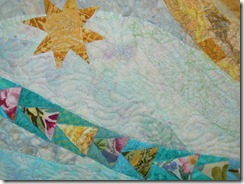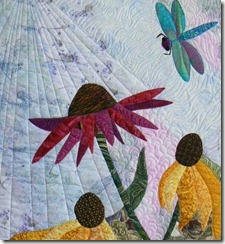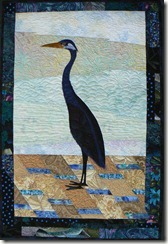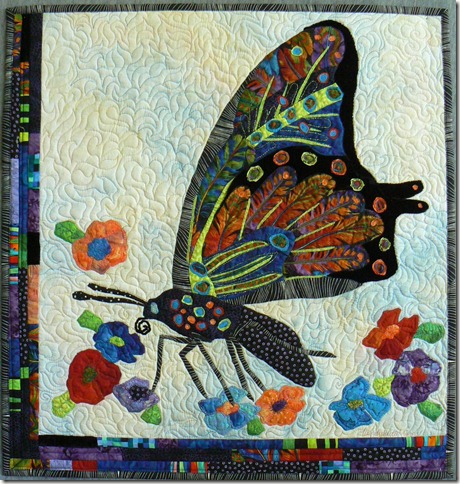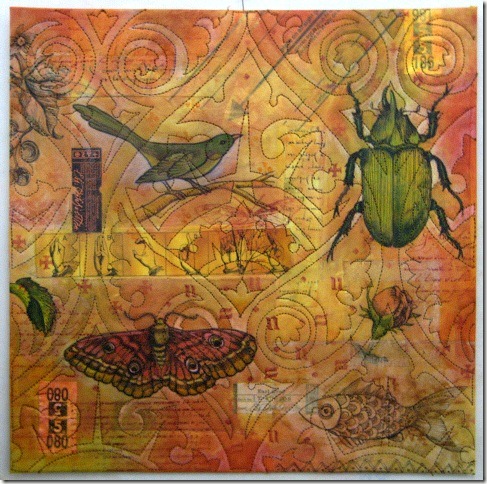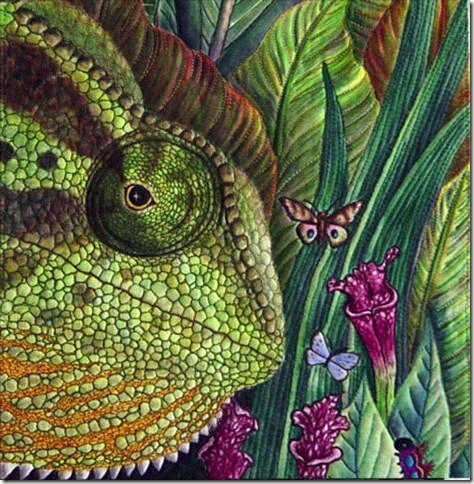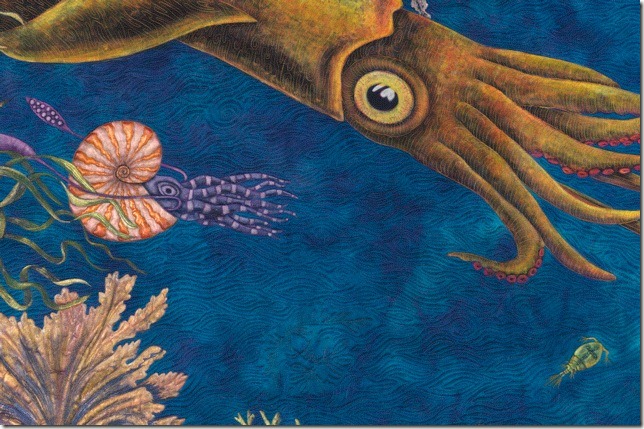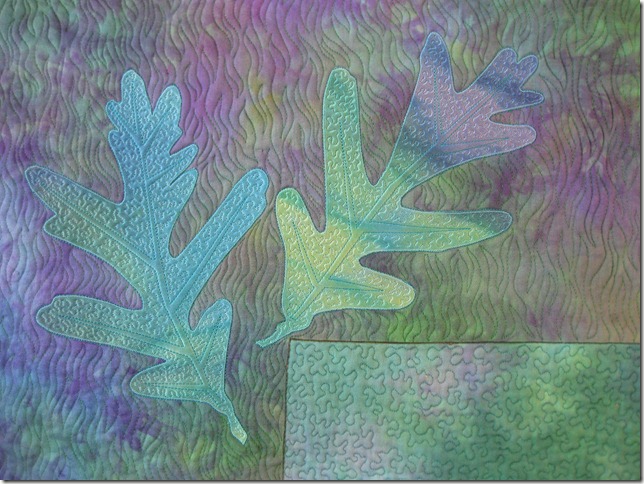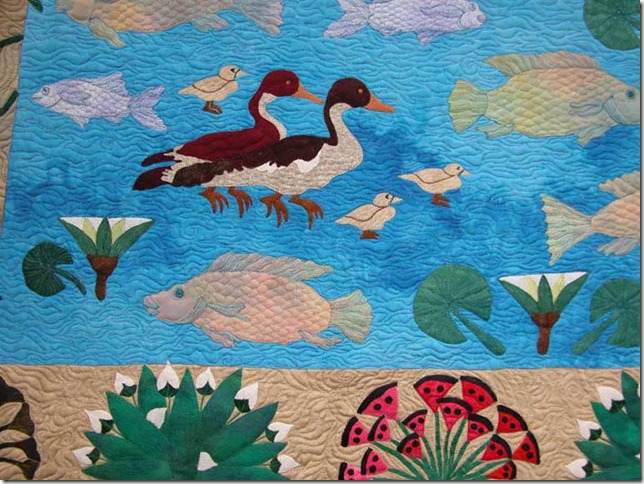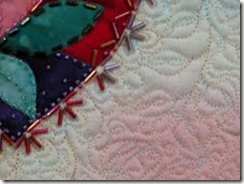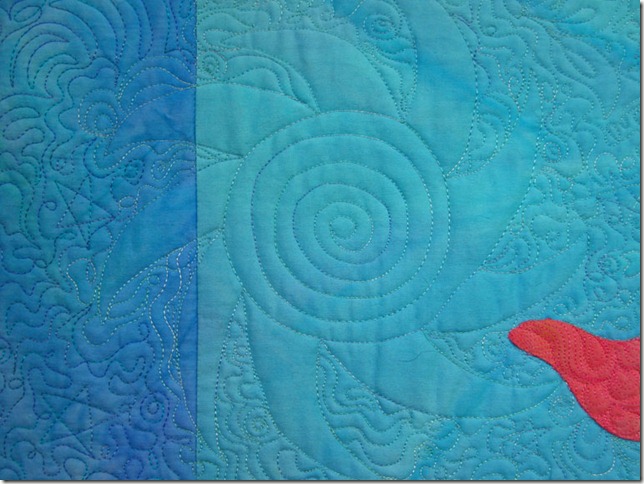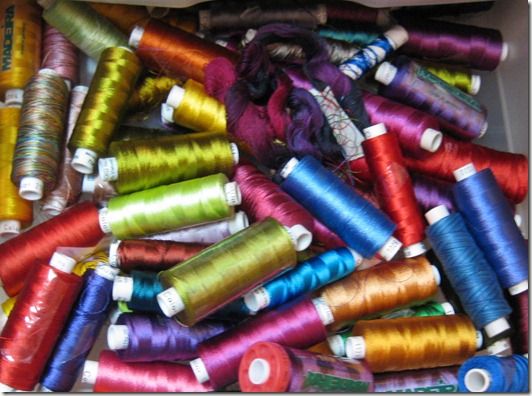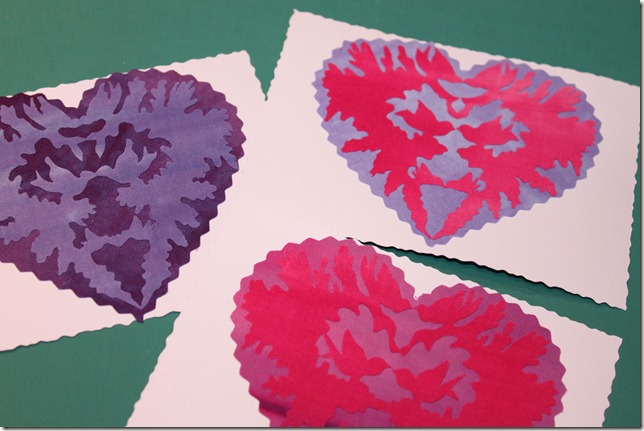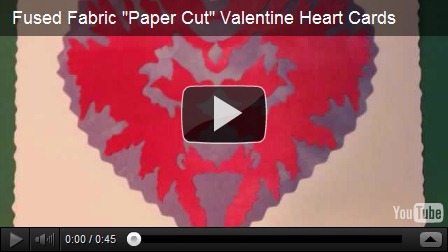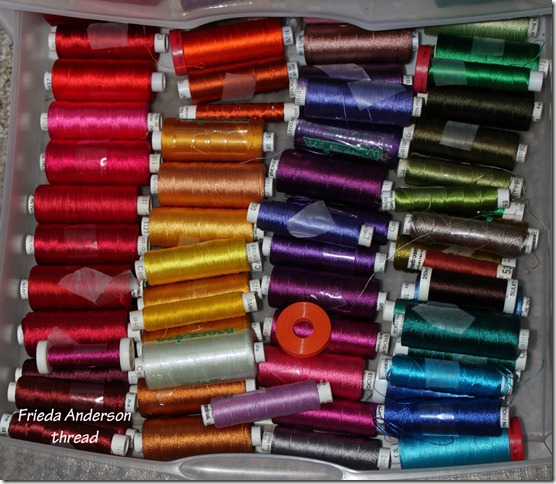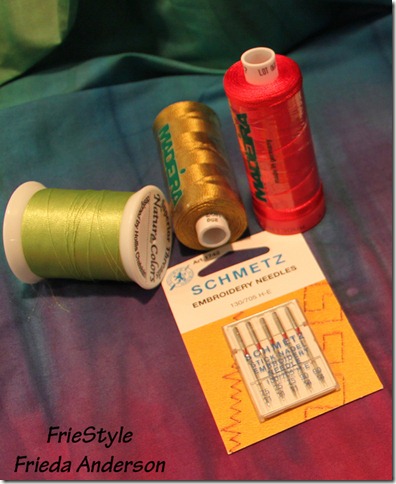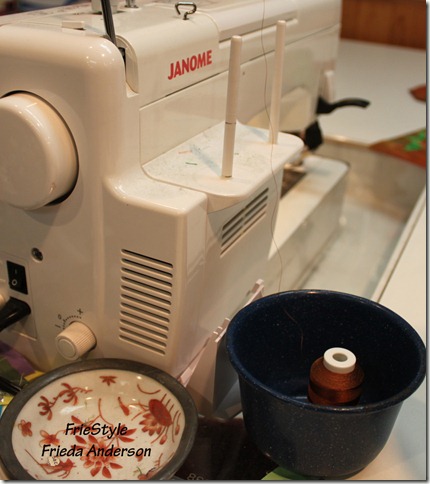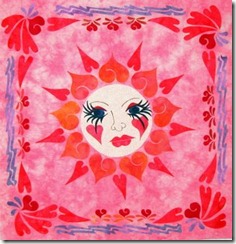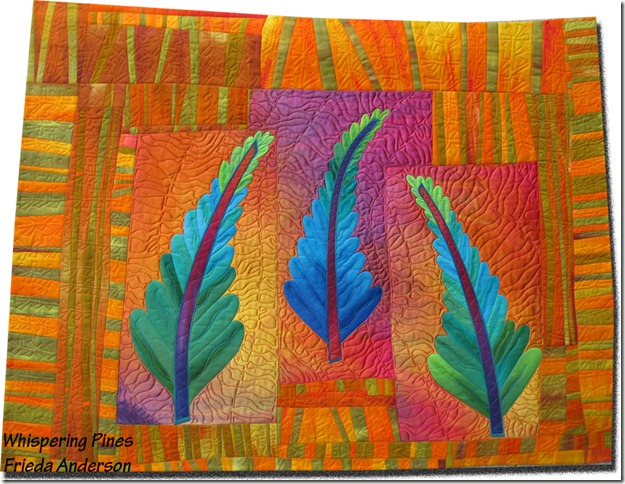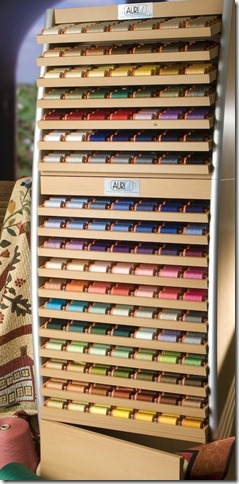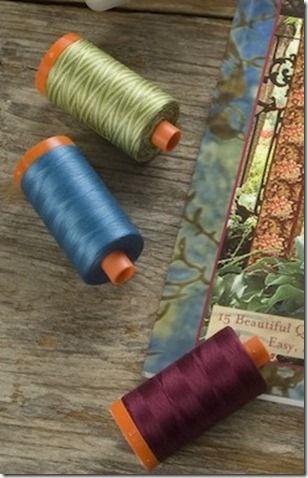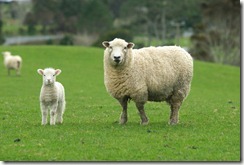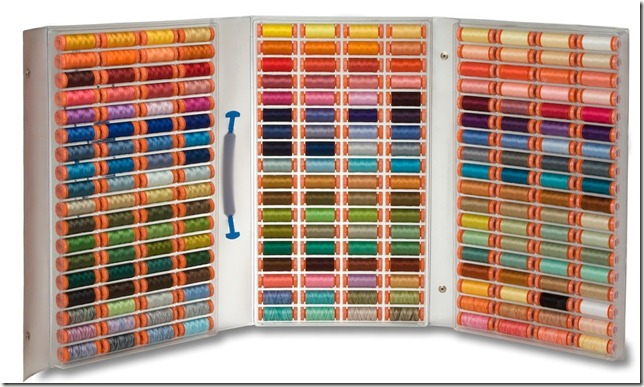Terry and I have an interesting history.
We ran into each other about five years ago at a small quilt show in Indiana. We were introduced and it turns out we attended the same high school. I was a few years OLDER and Wiser than Terry. Her brother was in my class, I really didn’t remember Terry, but she insisted she remembered me.
But what I find most interesting is that we both are working with fabric. Was it in the water where we grew up or what?
Terry you have developed a unique style in quilting. You make such beautiful thread painted images.
Thank you, Frieda. I do agree that you are much older than me…..okay, and much, much, much wiser!
How and why did you get so involved in drawing with thread?
Hand embroidery had been a part of my life since I was a child. I also would draw all my designs for embroidery, whether it was crewel, needlepoint, ribbon work, quilting or mixed thread techniques.
About twenty years ago, I developed “carpal tunnel syndrome”. It was pretty devastating. I couldn’t do hand needlework anymore. I couldn’t do too much drawing, either.
I was online and saw
Ellen Anne Eddy’s work.
Yes Ellen is an inspiration to us all. I have an interview with her later in the month.
Then, I remembered that I had taken a class many years earlier from Lois Smith and I was pretty good at free motion work. So, I bought a sewing machine from a friend, Nancy Martin, and she showed me how to set up for thread painting. I went to using a straight stitch after she showed me a zig zag stitching technique. I like the straight stitch because then I could make the lines any way I wanted to. I found that hooping the work made it very easy on my hands so I could do intensive and intricate embroidery without hurting my hands. I can draw in short spurts without too much hand fatigue, so most of my drawing is for my machine needlework.
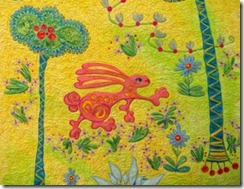 Detail of Run Rabbit Run
Detail of Run Rabbit Run, by Terry White
It took me about a year after doing a lot of experimenting before I did anything “Good”. I had a lot to learn about threads, stabilizers and fabrics and how they worked together. After a couple more years of experimenting and winning an award with my work, I was ready to teach. However, I still had a lot to learn.
You create your own designs where do you get your inspiration from?
Mostly nature. The wonderful lines, forms and colors found in my backyard teach me design. I also discover wonderful wrapping and other techniques by looking at the way things grow. I also am inspired by poetry, words and thoughts and funny things that happen with my family. Some of my works are visual jokes for my family and friends.
February Sun of the Month by Terry White
This is a great design, I wish I had made something like it. I love the weepy hearts.
You have been active in designing a new thread line with Coats and Clark, can you tell us about that?
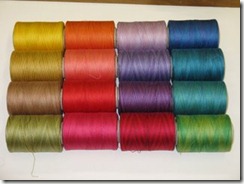
My
Stars thread line by Terry White
This is one of the coolest things I’ve ever done. I designed 24 multicolored Star Cotton threads for Coats & Clark! Wow, I have used Coats & Clark yarns and threads since I was a child, so this was a huge thrill for me. C&C also commissioned seven thread painted quilts which they have been using in their print advertising for the past couple of years. I also designed seven free projects for their website. star.com
What is your favorite type of needle to use with this thread?
I like to use a 90/14 machine embroidery needle. Whether I’m thread painting or using programmed decorative stitches, this needle lasts a long time and pierces the fabric in the right place for a neat, clean embroidery stitch.
Do you use stabilizer when you are thread painting? What kind do you like and why?
I use different stabilizers for different projects. For example; if the fabric is lightweight and the design is open, then a lightweight stabilizer is needed. For most of my dense work, I use three layers of lightweight interfacing and the interfacing is left in the work. It becomes part of the stitch structure and needs to stay to keep the stitches from distorting.
I know you have a book out with AQS, do you have any other products? Explain.
My first book with AQS is “
Thread Painting Made Easy”. It is the culmination of my experiments and 10 years of teaching and learning. I wrote everything I know about thread painting in this book.
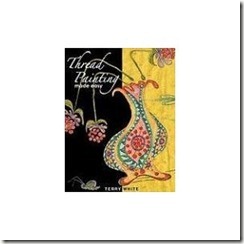
My second book with AQS is called, “
All Beaded Up by Machine”. Hand beading was always a feature of my hand quilting and hand embroidery. I was determined to find a simple method for beading with the sewing machine that did not entail putting the needle through the bead. I did it! I developed seven different techniques for this process and wrote the book.
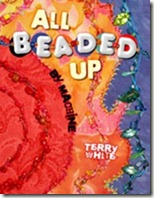
I had to invent a little notion called, “The Beadle” which helps to hold the beads in place as I couch over the bead string.
My third book with AQS is called,”
Enhance Your Quilts-Embellish!”
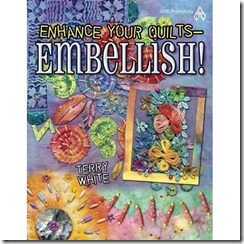
Embellishment was always a feature of my hand embroidered and quilted projects. When I bought my first really good sewing machine, I began to explore all the possibilities of the decorative stitches and feet. Along with the explosion of cool novelty threads, yarns, beads, buttons, charms, fabrics, dyes and trims, there isn’t even enough time in this world to put together fantastic mixes to create embellished quilts. So, I tried to do some; based on classes and projects I’ve done in the past 10 years.
My silk ribbon would look great in your projects, I will have to send you some.
Scot (my husband) and I also produce teaching videos based on my work and classes. Some of the videos are companions to my books.
What else would you like to talk about?
I am a
Bernina Artisan and I work with
Havel’s Scissors.
Yes, I like these too.
These are two companies providing beautiful products and also teaching the quilt world. Their websites have lots of free information and free projects.
Currently, I’m learning a lot about my Electric Quilt Program. I have patterns for sale on my website, but I’m focusing more on my design work to create a world of patterns for appliqué quilts. I’m also working with Seminole Patchwork patterns.

detail
Bird Walk by Terry White
I’ll be teaching this year in Lancaster Pennsylvania at the AQS show.
Oh too bad, I won’t be there but I will be at the AQS show in Paducah and Grand Rapids where I’ll have a booth and teach a class.
I’ll be at Quilt Market and Festival in Houston.
I’ll be in Houston too, so I’ll see you there.
I’ll be at some other places teaching, too.
I have a couple of blogs, one on my
flea market finds and the other on
stitching projects.
So, I’m looking forward to the future and what I can contribute to the stitching world.
I’m thinking of my next book, I’m thinking of calling it, “Thread Painting Made Difficult”. What do you think of that, Frieda?
It sounds great Terry I can’t wait to see it and try out the techniques. Thanks so much for sharing your talent with all of us. You know I love you.
Terry’s designs are so whimsical and fun, a real feast for the eyes. I hope you will visit her
website and become a follower of her blog.

Next week I’ll be talking about YLI thread and have an interview with my buddy Anne Fahl, so be sure to check back and send your friends over to take a look.

